BeoCord VX4500
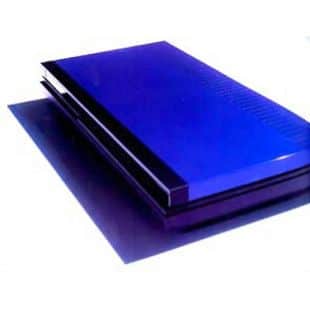
Beocord VX4500, Type 4535 was a basic version of the BeoCord VX5000. It lost the digital video effects but looked very similar outwardly.
Bang & Olufsen Designer

Beocord VX4500, Type 4535 was a basic version of the BeoCord VX5000. It lost the digital video effects but looked very similar outwardly.
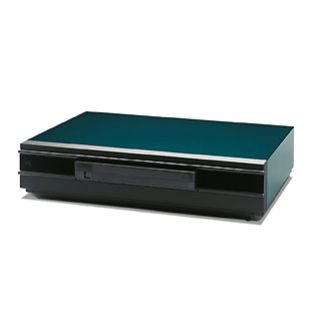
BeoCord V8000 video tape recorder matched the Beovision MX range of Bang & Olufsen televisions in looks as well as performance.
You could store a channel on the Beovision MX TV and it was automatically communicated to the V8000. Recording was a simple matter of selecting the programme directly from Teletext using the Beo4 remote control. It could be positioned by using one of the stands as part of a Beovision TV.
BeoCord V8000 rewound a three-hour tape in 95 seconds and it shifted from fast forward to play in a split second.
Other features included NTSC stereo playback. Looks-wise it embodied a black fascia with a choice of cabinets in pearlescent shades of blue, green, red, grey and black, plus glossy grey and glossy white.
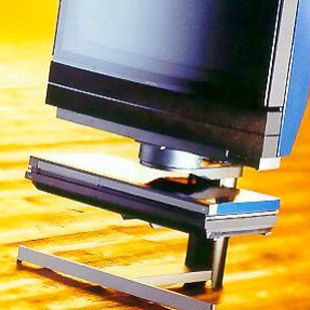
Beocord VX7000 video cassette recorder was operated and programmed with the Beo4 remote control (although could equally, if not be better controlled, through the previous two-way Beolink 5000 remote control unit) through Beovision MX models.
All channels stored on the TV were simultaneously stored on the VX7000. In 1995 a new model was released specifically designed to operate through the Beo4 remote control unit and lost the two-way communication that had been one of its greatest selling points.
Features: hi-fi stereo VCR; NICAM/A2, PAL/NTSC converter; Beo4 remote control (1995 models onwards); black fascia; cabinet in the same colour schemes as the Beovision MX7000 plus black.
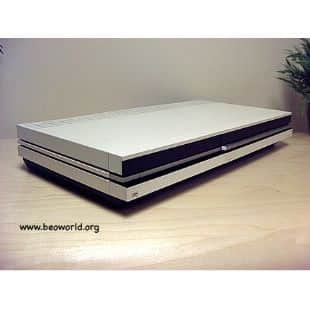
A special Bang & Olufsen feature was ‘spontaneous videotaping’. If you wanted to record the programme you were watching it was simply a matter of pressing ‘record’ twice on the remote control handset – and the VCR would automatically find the right channel and start taping.
You could with Beocord VX5500 play back in slow motion all the way down to still. You could use the picture-in-picture module with the VCR and the B&O TV on which you had it linked up to and it was also possible to keep your video tapes organised. By using a graphic ‘notebook’ you could name every video tape you record. Then you use the Beolink 5000 or Beolink 1000 terminal to simply order up the number of your recording.
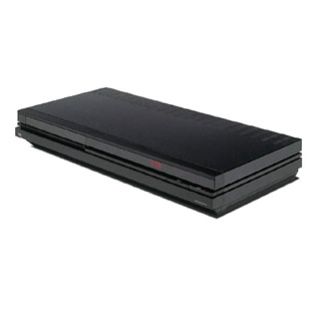
Designed by David Lewis, Beocord VX5000 was the flagship of the range in the late 1980’s, with the ability to display live pictures from up to nine different channels simultaneously. A TV guide that was hard to beat! The VX5000 worked best with a Bang & Olufsen TV, simply because they were made for each other. You could choose from either the contemporary MX or the classic LX series.
Designed by David Lewis, Beocord VX5000 was the flagship of the range in the late 1980’s, with the ability to display live pictures from up to nine different channels simultaneously. A TV guide that was hard to beat! The VX5000 worked best with a Bang & Olufsen TV, simply because they were made for each other. You could choose from either the contemporary MX or the classic LX series.
When you wanted to analyse a Wimbledon championship down to the last detail you would find the slow motion facility a real boon. And of course it was superb for picking up tips to improve your sporting style. You could also freeze frames, not only on video, but also in the middle of a direct broadcast; the picture quality remained at its impressive best.
We all know how complicated programming some video recorders can be. With the Bang & Olufsen range you don’t need a degree in pure maths to succeed. A ‘menu’ on the screen gave you straightforward instructions. So easy that you would want to take advantage of programming that lets you preset recordings of up to six different programmes up to one year in advance!
There was a very handy Search function too; acting like the ‘Track Searching’ on an audio cassette recorder, it took you to the programme you want with minimal fuss and bother.
The VX5000 gave you the choice of either four hours of video, or up to eight hours of top-quality hi-fi sound to last the whole night through!
Beocord VX5000 was designed specially be use in conjunction with Beovision MX5000 TV when, together, you could pull in a live picture from another channel on the screen while you continued with the programme you were already watching. Very handy when you were waiting for a specific programme on another channel to start. Much the same could be done in later years with the advent of Picture-in-Picture – a module bought as an accessory for fitting into your television.

Beocord V6000 was a hi-fi stereo video cassette recorder designed to work with Beovision models ME6000 and MS6000.
Together they formed an integrated unit in which TV and video cassette recorder automatically share all commands and can be operated by the same remote control. This combination was designed to be used as a standalone TV/VCR combination. The VCR had all playback facilities as any standard VCR. It also had VPS/PDC and NTSC playback. The video recorder was controlled via a Beolink 1000 handset through the Beovision television.
Bang & Olufsen’s new generation of TV and video systems at the time that the V6000 was released, made it simpler an more comfortable to watch TV. All data stored in the TV: time and programme channels, were automatically stored in the VCR as well. The same applied when you connected your TV and video recorder to a Beolink system – the clocks on the various units within the system were automatically synchronised.
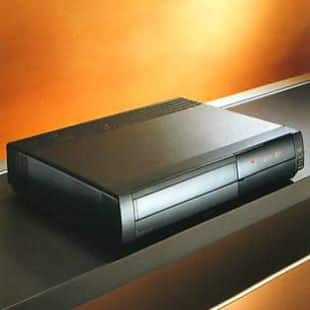
Beocord V3000 was designed to match Beovision LS5500 in looks and budget in order to allow video programming directly on-screen. It permitted eight programmes to be recorded up to one year in advance and had a superb quality slow motion and freeze facility. It also had twin speed recording and playback.
With the assistance of the Beolink 1000 remote control terminal you could handle complicated programming of the video recorder in the easiest possible way – direct via a menu on the TV screen. Beocord V3000 also had Bang & Olufsen’s uniquely fast access to taping any programme you were watching at that moment.
Press RECORD twice on the Beolink 1000 terminal and the VCR would automatically find the right channel in its memory and commence recording your TV programme. It was a fast mover too, having two winding speeds in both directions for picture search. Four video heads ensured that you obtained still pictures and slow motion in choice quality. Sound quality was in mono.
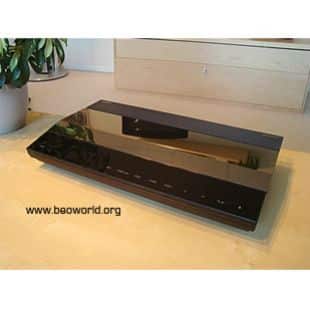
Beocord 4500 cassette recorder housed exciting details and distinguished technology. Like Auto Reverse, so you did not need to turn over the tape. Automatic registration of the type of tape, and Bang & Olufsen’s patented HX-PRO recording system that provided optimal sound reproduction. Both in design and technology, Beocord 4500 was a direct extension of Beomaster 4500.
The cassette recorder featured Bang & Olufsen’s own HX-PRO recording system which ensures that recordings are made as perfectly as possible. With the Beolink 1000 terminal or by lightly touching the panel itself, you could select a particular piece of music you wanted to hear. The search system found it automatically whether it was on Side 1 or Side 2 of the cassette. For Beocord 4500 had Auto Reverse so you did not have to turn the tape over.
The recorder was also equipped with Dolby B and knew exactly what type of tape you were using. Beocord 4500 could be used as part of the Beosystem 4500 hi-fi system.
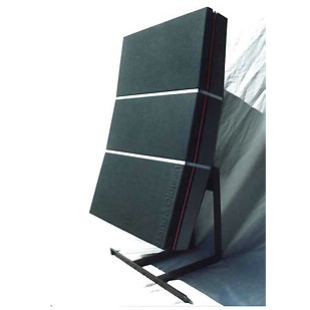
The idea behind Beovox Red Line speakers was one of flexibility.
A Red Line speaker was so flexible that it could be placed anywhere. On the ceiling, the wall, or on the floor. You could hang them semi-permanently on the wall, and if you had a party you could place them on the floor and thereby add extra emphasis to the bass. The different ways of placing them accentuated different frequencies.
You could also tilt them if you chose to hang them on the wall. This allowed you to adjust the sound image and direct the sound right at your listening position. However, Red Line was more than merely flexible. It was an impressive bass reflex speaker with a revolutionary new cabinet that ‘curved’ round the sound thereby eliminating irritating resonance because there were no parallel surfaces.
Music that never stands still
Red Line loudspeakers followed your music tastes right up the wall if you wanted! All models except the RL35 could be hung on the wall or be suspended from the ceiling; and, if your dancing feet wanted to make the most of the bass notes, then Red Line could be positioned on the floor, supported by the built-in floor stand. By using Red Line speakers, you weren’t plagued by cables that wrapped themselves around your feet like spaghetti either; Red Line’s flexible spiral cables provided the decorative and practical answer.
The shell was cast in a hard synthetic material and the shape that was devised for the range was characterised by the fact that it allowed for practically no resonance whatsoever.
Great and small
You could choose Red Line in four sizes. They started with the baby 35 watt RL35 – perfect for a Beolink round-the-house system where you needed speakers all over the place. Then there was the 45.2, the 60.2 and the immensely powerful 140’s – big and beautiful with it. All the Red Line collection came in metallic grey with a distinctive red line around the edge. A matching cord was available to accentuate the red line after which the speakers were named.
In 1991 the former Redline series – RL35, 45, 45.2, 60, 60.2, 100 and 140 were superseded by the Mark 2 range of loudspeakers: RL1000, 2000, 6000 and 7000.
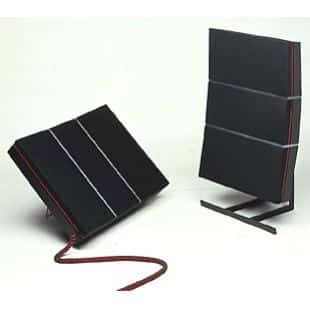
The idea behind Beovox Red Line speakers was one of flexibility. A Red Line speaker was so flexible that it could be placed anywhere. On the ceiling, the wall, or on the floor.
You could hang them semi-permanently on the wall, and if you had a party you could place them on the floor and thereby add extra emphasis to the bass. The different ways of placing them accentuated different frequencies. You could also tilt them if you chose to hang them on the wall. This allowed you to adjust the sound image and direct the sound right at your listening position. However, Red Line was more than merely flexible. It was an impressive bass reflex speaker with a revolutionary new cabinet that ‘curved’ round the sound thereby eliminating irritating resonance because there were no parallel surfaces.
Music that never stands still
Red Line loudspeakers followed your music tastes right up the wall if you wanted! All models except the RL35 could be hung on the wall or be suspended from the ceiling; and, if your dancing feet wanted to make the most of the bass notes, then Red Line could be positioned on the floor, supported by the built-in floor stand. By using Red Line speakers, you weren’t plagued by cables that wrapped themselves around your feet like spaghetti either; Red Line’s flexible spiral cables provided the decorative and practical answer.
The shell was cast in a hard synthetic material and the shape that was devised for the range was characterised by the fact that it allowed for practically no resonance whatsoever.